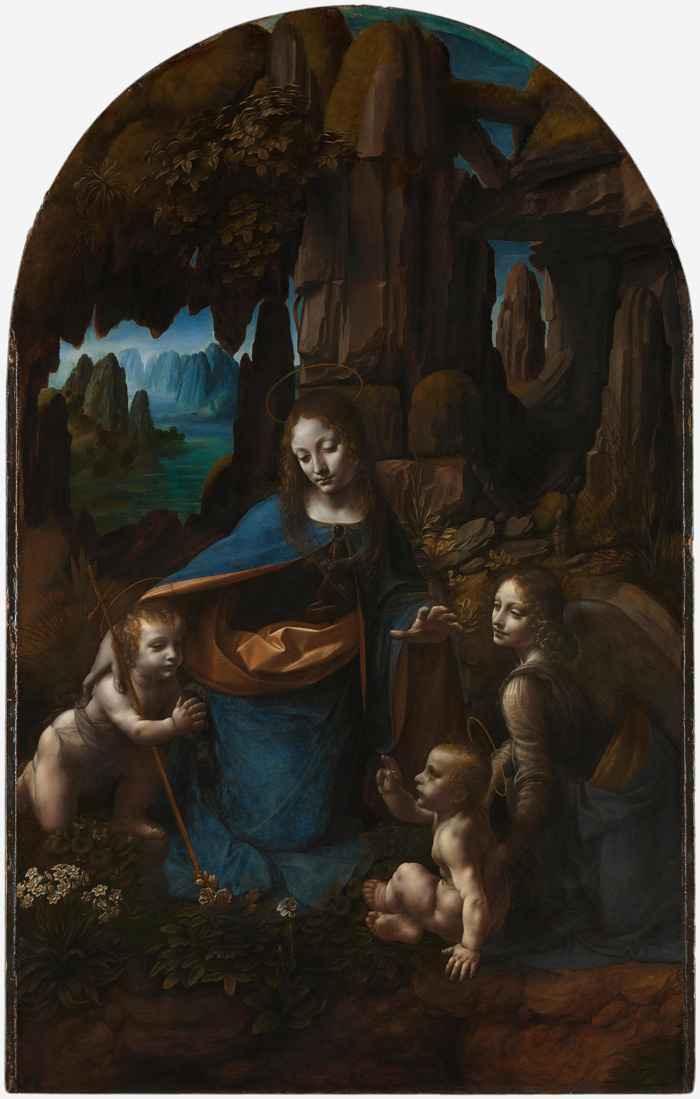Article by Slater Smith
Is color or line more important in a painting? This question spans all the way back to the times of the Renaissance when classical techniques were being rediscovered and invented. Italy, the center of the Renaissance, itself debated the topic which resulted in Florence and Venice creating two separate styles.
The Florentine artists believed that linear construction was the best way to depict nature on a flat surface. To them, drawing was not only the foundation of painting, but also a way to paint. Part of this belief had to do with location. The climate in Florence was suitable for frescoes and tempera paintings. To successfully pull off works with the desired paints were difficult. Both were permanent, so fixing mistakes was tedious and unwanted.

Giorgio-Vasari – Last Judgement, the Florence Cathedral
Artists in the area drew out plans, or cartoons, of their finished product to ensure that nothing would need to be altered midway through a piece. The application of paint was done with hatching, crosshatching, form-hatching, and other similar techniques that strongly focused on drawing. Sharp lines were common and outlines encompassed figures and objects. Venice, however, disagreed with those methods.
Venetian artists approached painting differently. Color played a major role in portraying the world on canvas.
The climate of Venice was too humid for tempera and fresco, so the artists adopted oil paints. The medium could always be reworked. Even after drying, more paint could be applied over the surface.
Venetian painters, instead of making preparatory drawings, worked out compositions as they went along. If something looked off, painters either wiped the error away while wet or worked over the area after the paint dried. Lines were not usually prevalent. Instead, the colors were remarkably saturated and vivid.
That is not to say artists did not adapt the habits of their contemporaries. Many of Leonardo da Vinci’s works are made partially or entirely of oil, but he always made cartoons, evidence of line pops up from place to place, and does not usually incorporate saturated colors; holding onto the training he received in Florence.

Leonardo da Vinci – The Virgin of the Rocks
Tintoretto was a Venetian painter who used oils and saturated colors, but recognized the linear powers of Michelangelo. He adapted Florentine techniques to suit his style. He was somewhere in between, not exactly belonging to either school, and become quite popular for his integration of two opposites.

Jacopo Tintoretto – The Last Supper
The debate went on over the centuries. Nicolas Poussin, a French artist, favored the rationality and power of line.
Peter Paul Rubens, Flemish, took a strong preference for color.

Peter Paul Rubens – Diana Returning from Hunt
Schools were torn internally between Rubenistes and Poussinistes for a few centuries.
Both approaches have their merits and disadvantages. Neither is particularly superior to the other and is more reliant on style than anything. No matter which way one went, solid drawing skills were still needed to master painting. Both sides held proficient, dedicated draftsman. Rubens, despite favoring color, made dozens of drawings made with pen and ink lines.

Peter Paul Rubens – Self portrait
Even the Impressionists like Degas and van Gogh, who took color to its very limits, advocated strong drawing skills.
This practice has died out in recent times, but, luckily, places like the Drawing Academy and a few art schools continue to support learning how to hold a pencil before expecting to create moving paintings.





